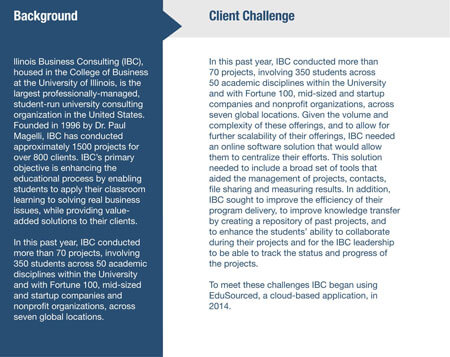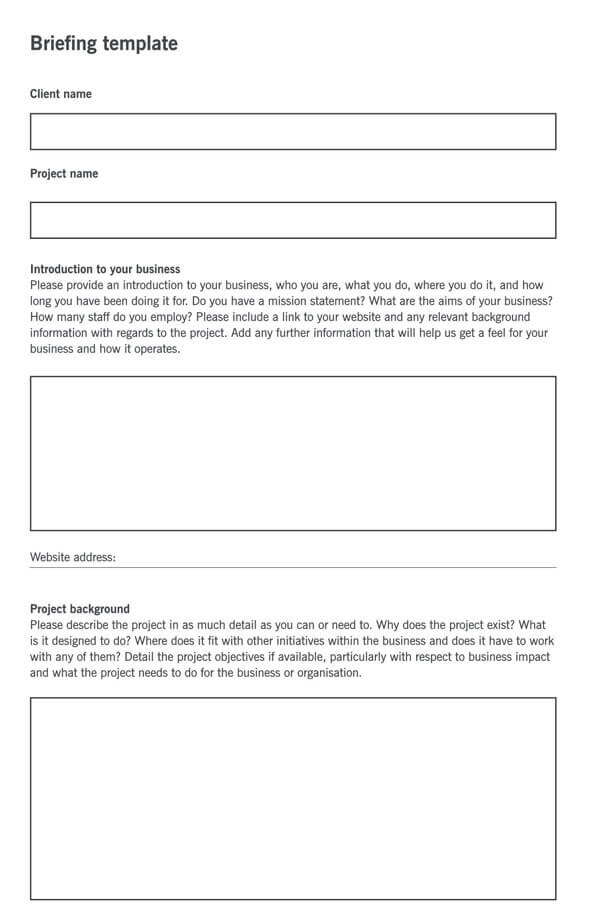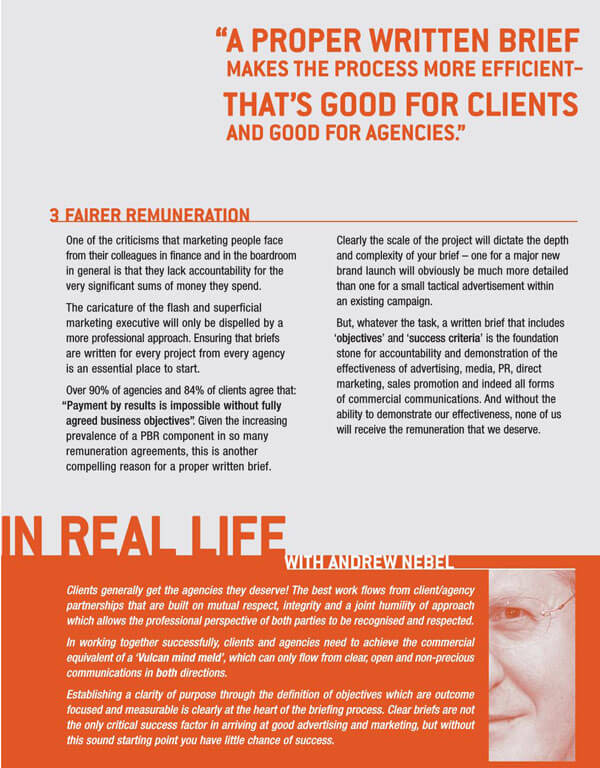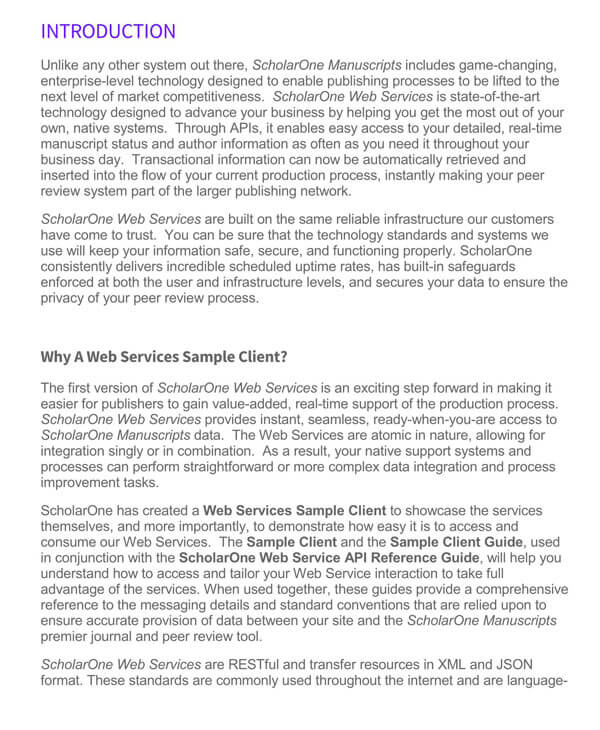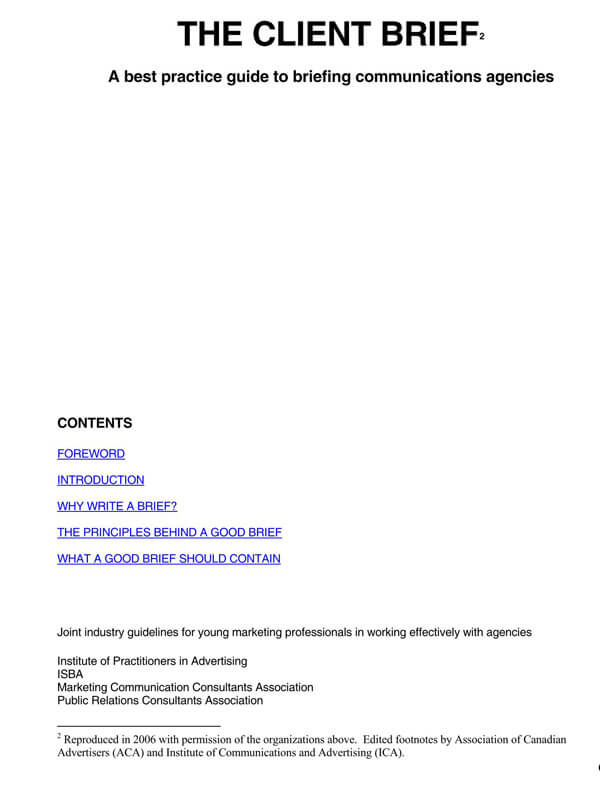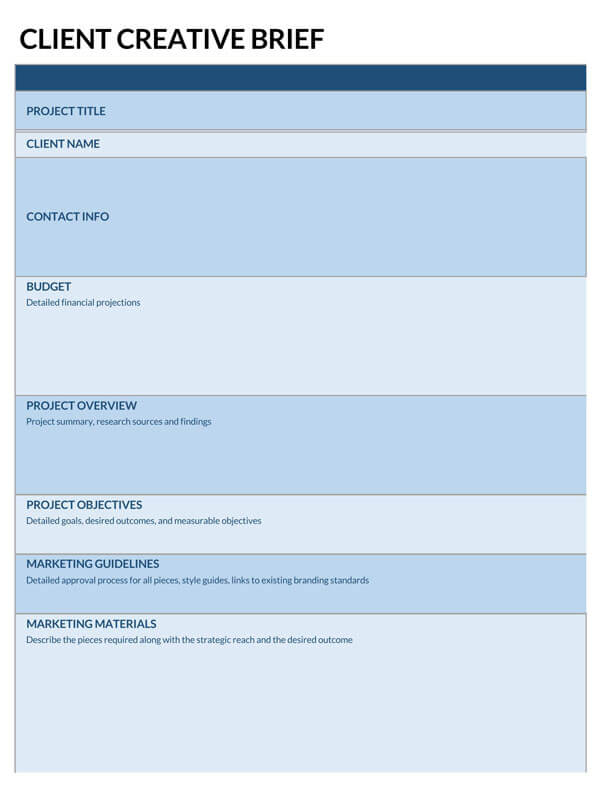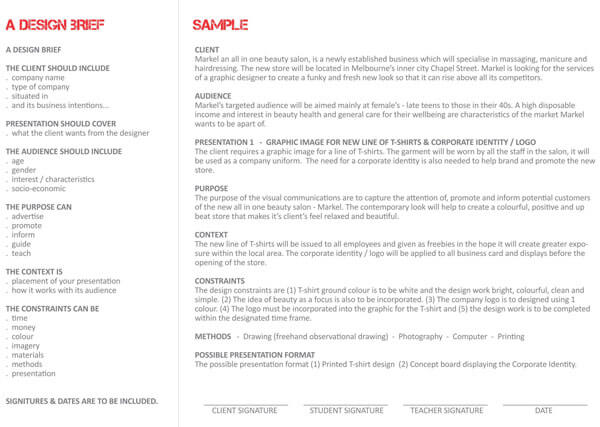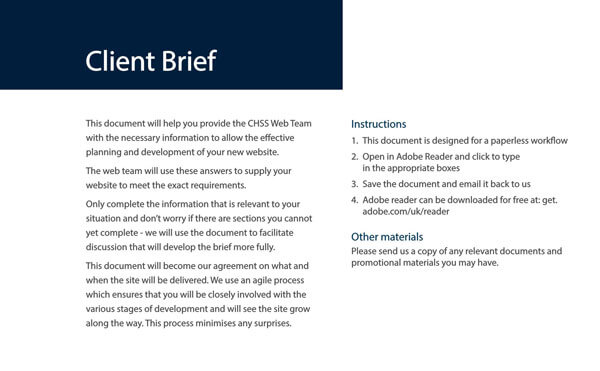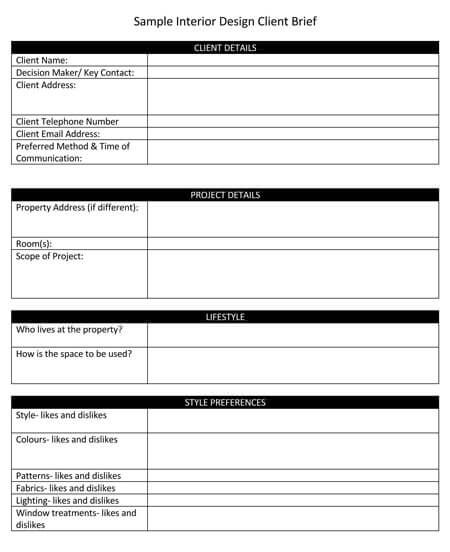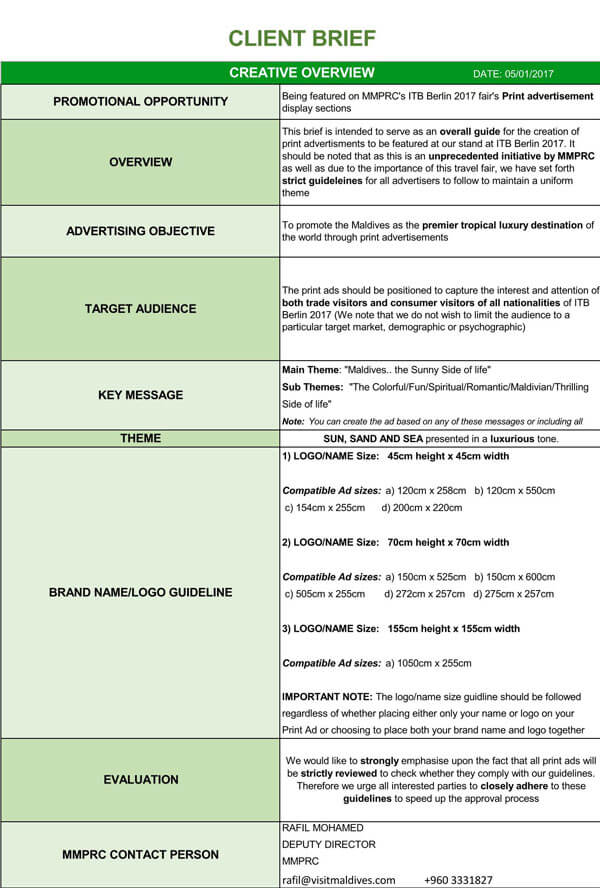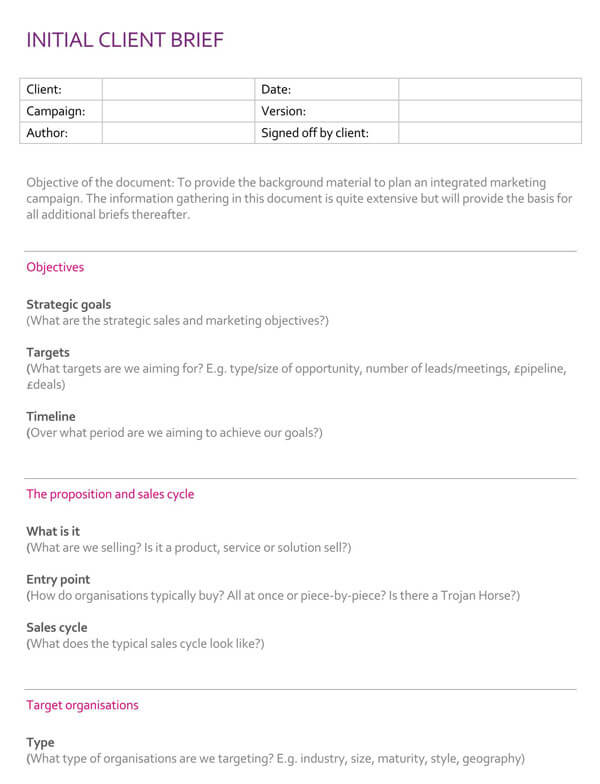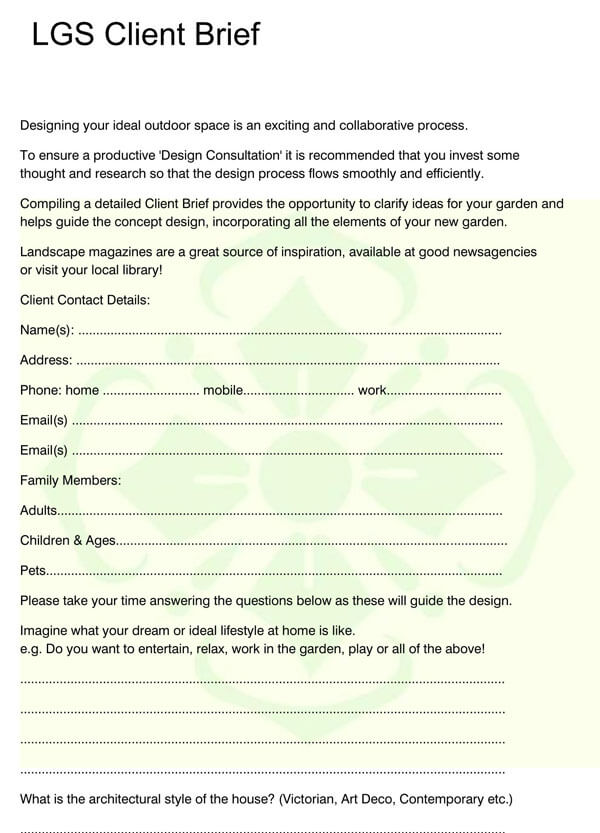Proper communication is the key to any stable relationship between a business and its clients. This is especially important in the case of small businesses where poor communication can result into poor results that may end up costing the business lots of cash. If the business’s objectives, strategy, or goals are not well communicated within the organization, it could result in chaos and confusion.
Whether you are communicating externally with an agency, client, or your stakeholders or internally with your staff members, clear communication is the key to running any successful project. Although one on one communications are very important, especially with agencies and external partners, getting everything written down can help solidify whatever is being discussed and ensure that everyone is on the same page, and this is where client briefs come in.
What is a Client Brief?
A client brief is a bi-lateral communication between a client and an external party who has agreed to work on a project. Client briefs explain the project’s nitty-gritty, including its scope and aspiration, ensuring that both the parties involved know what is expected of them and the desired result. The brief basically acts as a blueprint for the project, helping synchronize all the parties involved in the project.
Difference Between a Client Brief and a Creative Brief
A client brief is basically a correspondence between an external party outsourced to work on a project and a client. The brief is sent to the client to help gather their thoughts, directions, and goals for the project.
A creative brief, on the other hand, is a document that is used to outline the strategy of a creative project. Creative briefs are normally used by designers to draft their ideas and goals internally. A creative brief outlines the who, where, what, when, and how of the project’s deliverable.
Why Should You Write a Client Brief?
Here is why you should consider writing a client brief:
- Client briefs help remove ambiguity: from agencies, clients, stakeholders, and internal staff, the client brief is a great way to get everyone on board, eliminating the need for expensive revisions. After the document has been drafted, reviewed, and agreed upon, all the parties involved can easily refer back to it at any point to help them stay on track.
- Client briefs lead to better outputs: with a properly drafted client brief, one can obtain all the necessary information required to complete a project. With a client brief at hand, it is much easier for establishments to know how they can satisfy their needs.
- Client briefs can be used as a point of reference: With a client brief, specific calls to action and proposals can be easily established if all the parties involved in the project are aware of the desired outcomes and the processes that can make those expectations be realized.
- Client briefs help save time: Having an outline of what, when, and how you are supposed to do certain things can help you save time. With a client brief, one can easily implement all the procedures, processes, and activities necessary to run a project to completion, thereby saving them time and headaches.
How to Write a Perfect Client Brief
Although very important, coming up with the perfect client brief can be challenging for most people. Here are some steps that you can follow to help you come up with one that will not only help you obtain all the information you require from your client but also help you run and manage your project more effectively.
Step 1: Describe Your Brand
This section sets the tone of your entire brief. It allows you to show your client that you understand both their mission and project motivation. In this part, communicate your brand to them. Help them understand who you are, what you do, and why you do what you do. You also want to include some of your company goals and objectives in this section.
Step 2: Overview of the Challenges and Objectives
The next thing to do is to write down a detailed section about what you need to do when you need to do them, and who will be doing those things. This part should highlight your business challenges and how the project you are looking to start will help resolve them.
Step 3: Describe the Target Market
The next section to include is the target market. With the target market in mind, you will be able to know your deliverables much easily. First, do your research and
know the “who” of the project before launching it. The information you obtain when analyzing your target market, such as how old they are, where they are from, their average salary, and their average interests, can help you run a successful project.
Step 4: Analyze the competitive landscape
This part is all about the businesses in your niche who are offering the same products/services or targeting the same customers as you are. You can use the competitive data you obtain when analyzing the competitive landscape to develop ideas that they haven’t tried yet, come up with a project that improves on a strategy that they have used before or learn from their failed projects.
Include a list of all the competitors around you to help make the party work on the project to quickly grasp an idea of the type of business they are up against. List down some things that your company has in common with them, and you are different and the areas where this project can help you get ahead of them to provide a clear picture of what the end product should be like.
Step 5: Offer a brief distribution plan
After completing the project, you will have to make sure that it reaches the target audience. Different venues usually have unique audience expectations and ways of engagement. Mention some of the channels or platforms that you will use to announce the launch to your audience.
Step 6: Share the brief with your team members
After drafting the client brief, share it with your team members to help them understand what the project is all about. Provide them enough time to go through the brief and be ready to answer their questions to better understand what they are working with.
Tips for a Successful Client Brief
- Keep your brief simple: Keep the client brief simple and direct to the point. Only include what is important and leave out any unnecessary details that may confuse the client or the team.
- Use a template: The best way to ensure that only the necessary information is captured in the brief is by using a template. Download and use a template to help you out.
- Work with the client: Remember that the customer is always right. When drafting the client brief, make sure to work with them to ensure that you capture all their specifications and requirements. You do not want to assume anything when coming up with the brief; always ask the client what they would like to be included in the project and ask for clarifications where you may not understand.
- Refer to the brief: After you’ve compiled the brief, always make sure that you refer to it when doing the project. Do not assume that you know everything about the project. You don’t want to go through a nerve breaking process only to realize that you were supposed to have done it differently.
Download Client Brief Templates
If you are having a hard time drafting your client brief, download our templates to help you out. You can use our client brief templates as a guide, or you can use them as they are. Simply change a few things, make sure that they match your project and that all the details are correct, and you are good to go.
We hope this article has provided you with all the information you need to develop an excellent client brief. By working through all the important aspects of the project listed in this article and following all the tips provided, we believe that you will produce a thorough and effective client brief that will be a great aid to your clients.
